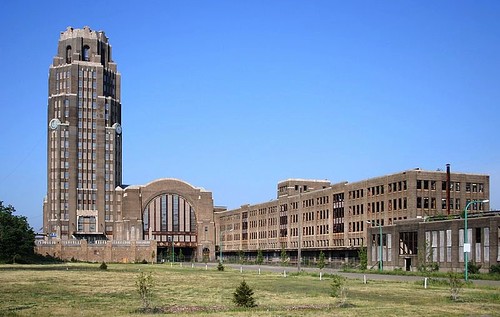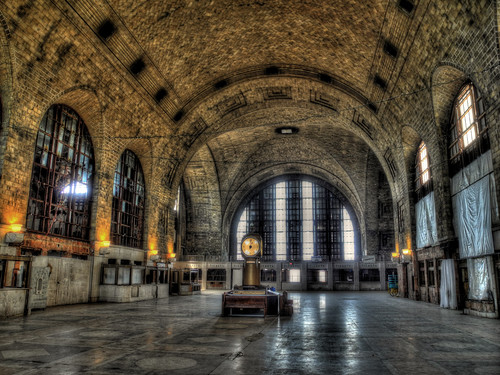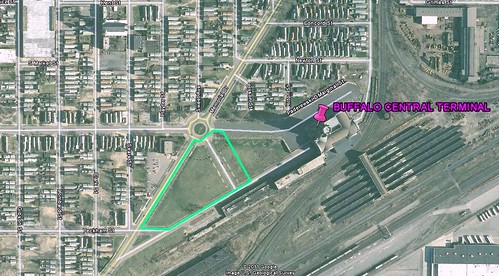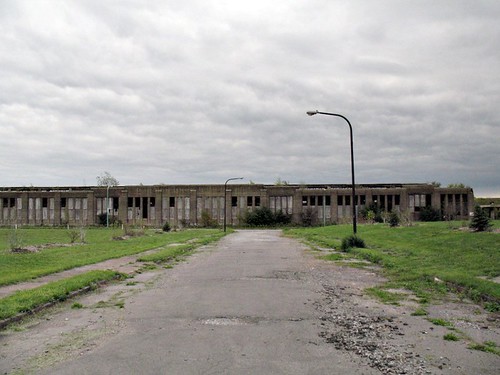Urban habitat demo takes shape in Buffalo

Posted October 21, 2011 at 2:33PM
Thanks to residents with skill, dedication and vision, Buffalo, New York is getting a sophisticated demonstration of natural ecology on a site next to the city’s majestic but abandoned Central Terminal, now being restored.
As I have written before, Buffalo has struggled in recent decades but has a rich architectural legacy to build upon as it crafts its future. The art deco landmark Buffalo Central Terminal is certainly part of that legacy: built in 1929 to handle 3200 rail passengers per hour, the terminal with its 15-story office tower was closed in 1979. It fell into such major repair that it was repeatedly used as a site for episodes of the Ghost Hunters TV show.
It is now being restored under a master plan supervised by the Central Terminal Restoration Corporation, whose website describes its potential:
“Besides being an instantly recognizable element of the Buffalo skyline and a cultural landmark, the Terminal could once again serve as a gateway to the city by utilizing the opportunities presented by its location and the current system of networks which pass through or near the structure. Through reactivation of these dormant systems, the Terminal could provide transportation for suburbanites to the city, welcome both domestic and international tourists to the city, and connect the east coast to [the] Midwest without delays, all from its existing site and without severe infrastructure disturbance or interruption.
“The same historic reasons for locating the Terminal in its present location are still as valid today as they were a century ago. The structure’s proximity ( 2.5 miles or less ) to downtown and Larkin business districts, while being adjacent to a historic walkable neighborhood (Polonia), presents the Terminal with the opportunity to be the cornerstone of a renaissance.”
As described in an article posted last year on the excellent blog Buffalo Rising, the Buffalo Urban Habitat Project and Classroom is being installed on three acres of unused property at the front door of the Central Terminal. The project is intended as a “living inner-city demonstration classroom that features habitat restoration, native plants, and sustainable site development/construction” that will help restore the Central Terminal and unify the community.
The first phase of the project is being completed this month. There will be large groves of pine trees, hawthorns, native shrubs, and vast meadows of grasses and wildflowers that have been specifically designed and selected to meet specific site criteria. The site will demonstrate biodiversity, native regional habitats, soil remediation, several plant communities, ecosytems that benefit birds, bees, various beneficial insects and an array of resident mammals that currently exist near the site.
A major feature of the project is control of stormwater through green infrastructure that is designed not only to handle on-site precipitation but also to attract and process runoff from nearby areas. Project leader Dave Majewski is quoted in an article posted on Buffalo Rising earlier this month:
“We have taken the [low-impact development] component a major step forward in that, rather than simply mitigating negative impacts on the site, we are reversing that by making the site better because of what we have done.
“This is a Western New York first - we are impounding approximately 320,000 gallons of storm water runoff from Curtiss Street and redirecting it in to the site via two adjoining large bio-retention cells. This project will be an example to municipalities and developers as to how real Sustainable Sites and Low Impact Developments can feasibly be undertaken with ecologically sensitive integrated planning and design.”
Planted and seeded areas were specially selected for particular functions and benefits – while also demonstrating the plant communities that occur naturally in the region. The project “is intended to help make the Central Terminal a destination rather than a quick photo op,” says the article, and to leverage nearby green development projects as well.
Planning has begun on a second phase that will encompass the remainder of the site and include an educational gazebo, fencing and additional signage.
Move your cursor over the images for credit information.



